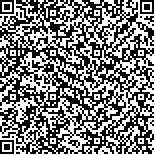| Quote
: |
周赛男,刘琴,周姝,韩运宗,陈思清,符佳.黄芪建中汤对脾胃虚寒证胃溃疡大鼠胃黏膜保护作用的机制研究[J].湖南中医药大学学报英文版,2023,43(11):1978-1985.[Click to copy
] |
|
| |
|
|
| This paper
:Browser 1360times Download 512times |
| 黄芪建中汤对脾胃虚寒证胃溃疡大鼠胃黏膜保护作用的机制研究 |
| 周赛男,刘琴,周姝,韩运宗,陈思清,符佳 |
| (湖南中医药大学第一附属医院, 湖南 长沙 410007;湖南中医药大学, 湖南 长沙 410208) |
| 摘要: |
| 目的 基于动物实验研究黄芪建中汤对脾胃虚寒证胃溃疡的治疗作用及抗黏膜损伤机制。方法 将大鼠随机分为正常组、模型组、西药组及中药组,每组15只。除正常组外,另3组均应用耗气破气法+饥饱失常法+冰醋酸法复制脾胃虚寒证胃溃疡模型。中药组、西药组各予黄芪建中汤(6.8 g/kg)、奥美拉唑(4.2 mg/kg)灌胃,另两组则灌以等体积蒸馏水。给药20 d后计算胃溃疡指数;HE染色观察胃组织形态;ELISA法检测血清白细胞介素-18(interleukin-18, IL-18)、白细胞介素-1β(interleukin-1β, IL-1β)、肿瘤坏死因子-α(tumor necrosis factor-α, TNF-α)水平;RT-PCR检测胃组织肝细胞生长因子(hepatocyte growth factor, HGF)、细胞间质上皮转换因子(cellular-mesenchymal epithelial transition factor, c-Met)、磷脂酰肌醇3-激酶(hosphoinositide 3-kinase, PI3K)、蛋白激酶B(protein kinase B, AKT)、表皮生长因子受体(epidermal growth factor receptor, EGFR) mRNA表达水平;Western blot法检测PI3K、磷酸化AKT (phosphorylated protein kinase B, p-AKT)、EGFR蛋白表达;免疫组织化学检测胃组织HGF、c-Met的表达水平。结果 与正常组比较,模型组胃溃疡指数增高(P<0.05),胃组织溃疡损伤明显,血清IL-18、IL-1β、TNF-α水平增高(均P<0.05),胃p-AKT、AKT、EGFR蛋白及mRNA表达下降(均P<0.05);与模型组比较,中药组胃溃疡指数、炎症因子水平(均P<0.05)显著降低,胃黏膜受损程度改善(P<0.05),胃HGF、c-Met、PI3K、p-AKT、EGFR蛋白及mRNA表达水平上调(均P<0.05)。结论 黄芪建中汤对胃溃疡有良好的治疗作用,其机制可能与激活HGF/c-Met、PI3K/AKT通路以增强胃黏膜的防御机制和减轻炎症反应有关。 |
| 关键词: 黄芪建中汤 胃溃疡 肝细胞生长因子/细胞间质上皮转换因子信号通路 磷脂酰肌醇3-激酶/蛋白激酶B信号通路 表皮生长因子受体 炎症 大鼠 |
| DOI:10.3969/j.issn.1674-070X.2023.11.007 |
| Received:March 22, 2023 |
| 基金项目:湖南省自然科学基金科卫联合项目(2022JJ70031);湖南省中医药科研计划重点项目(2021203);湖南中医药大学中医学一流学科开放基金项目(2018ZYX13);湖南中医药大学中医学世界一流培育学科(2023)。 |
|
| Mechanism of action of Huangqi Jianzhong Decoction in protecting gastric mucosa of gastric ulcer rats with deficiency cold of the spleen and stomach pattern |
| ZHOU Sainan,LIU Qin,ZHOU Shu,HAN Yunzong,CHEN Siqing,FU Jia |
| (The First Hospital of Hunan University of Chinese Medicine, Changsha, Hunan 410007, China;Hunan University of Chinese Medicine, Changsha, Hunan 410208, China) |
| Abstract: |
| Objective To study the therapeutic effects of Huangqi Jianzhong Decoction on gastric ulcer with deficiency cold of the spleen and stomach pattern, as well as its mechanism of anti-mucosal damage based on animal experiments. Methods Rats were randomly assigned into normal, model, western medicine, and Chinese medicine groups, with 15 rats in each group. Except for the normal group, the other three groups were induced to replicate the gastric ulcer model of deficiency cold of the spleen and stomach pattern by gas consumption and gas breaking, hunger-satiety disorder, and glacial acetic acid. Huangqi Jianzhong Decoction (6.8 g/kg) and omeprazole (4.2 mg/kg) were given to Chinese medicine and Western medicine groups by gavage respectively, while the other two groups were given an equal volume of distilled water. The gastric ulcer index was calculated after 20 d of administration. HE staining was used to observe the morphology of gastric tissues. The levels of interleukin-18 (IL-18), interleukin-1β (IL-1β), and tumor necrosis factor-α (TNF-α) in serum were measured by ELISA. RT-PCR was used to measure the mRNA expression levels of hepatocyte growth factor (HGF), cellular-mesenchymal epithelial transition factor (C-Met), phosphoinositide 3-kinase (PI3K), protein kinase B (AKT), and epidermal growth factor receptor (EGFR) in gastric tissues. Western blot was used to measure the protein expressions of PI3K, phosphorylated protein kinase B (p-AKT), and EGFR. The expression levels of HGF and c-Met in gastric tissues were measured by immunohistochemistry. Results Compared with normal group, the gastric ulcer index in model group increased (P<0.05), the gastric ulcer was obviously damaged, the serum levels of IL-18, IL-1β, and TNF-α increased (all P<0.05), and the protein and mRNA expressions of p-AKT, AKT, and EGFR in gastric tissues decreased (all P<0.05). Compared with model group, the gastric ulcer index and inflammatory factors in Chinese medicine group significantly decreased (all P<0.05), the damage degree of gastric mucosa was alleviated (P<0.05), and the mRNA expressions of HGF, c-Met, PI3K, p-AKT, and EGFR in gastric tissues increased (all P<0.05). Conclusion Huangqi Jianzhong Decoction has good therapeutic effects on gastric ulcer, and its mechanism may be related to the activation of the HGF/c-Met and PI3K/AKT pathways, which in turn enhances the defense mechanism of gastric mucosa and reducing inflammatory. |
| Key words: Huangqi Jianzhong Decoction gastric ulcer hepatocyte growth factor/cellular-mesenchymal epithelial transition factor signaling pathway hosphoinositide 3-kinase/protein kinase B signaling pathway epidermal growth factor receptor inflammation rat |
|

二维码(扫一下试试看!) |
|
|
|
|


